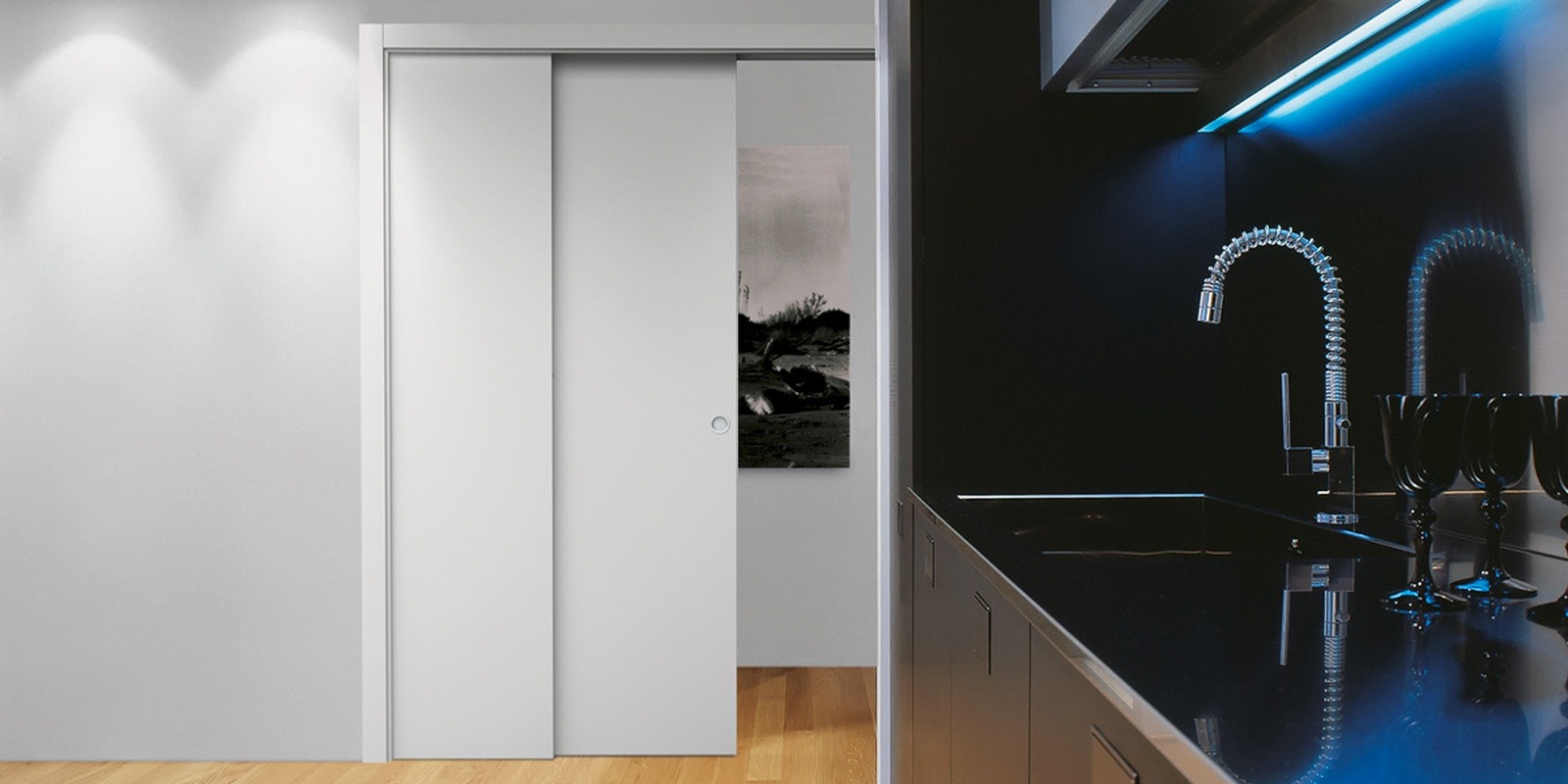
When To Install a Pocket Door
A pocket door can be instrumental in transforming any space from homes to tiny offices. Everyone wants to make the most of their space. No matter your home’s size, you want to use it wisely. How you design your rooms can affect this.
While you can make clever use of your furniture and layouts to help keep your rooms spacious and efficient, they are not the only way. The design of your rooms themselves can help you maximise the utility of the space. A double pocket door can boost even small spaces while staying private and stylish.
In this article, we’ll examine when installing a pocket door can be a practical option.
What is a Pocket Door?
A single pocket door is a mechanism that allows a door to slide into a hidden ‘pocket’ inside a wall. Unlike traditional sliding doors, a floor rail is optional and the door slides away into a wall cavity. This means that the door appears to disappear when it is opened.
Why Choose a Pocket Door?
A pocket door can help you make the most of your space. Think about the layout of most rooms. You will likely leave space behind a door to ensure it has room to swing into. This is potentially wasted space that could be used for other purposes. A pocket door lets you plan for 100% of the room’s floor plan.
Our pocket doors are particularly suitable for rooms where space is at a premium. This could mean rooms that are traditionally small parts of the house – like a laundry or boot room.
Do I Need To Install A Pocket Door When I Renovate?
A pocket door is a little more complicated to install than a traditional door, due to the need for a pocket to be constructed or fitted. Some walls are easier to start with than others. If you have a home with hollow walls, such as a drywall/plasterboard construction, it is easier to fit the pocket. However, if you have solid walls, you must construct an artificial gap for the door to slide into.
If you need to undertake further work to make a pocket door practical, it might be easier to do this while completing a broader renovation. That said, a professional should be able to install a pocket door in just about any space, even one that may not currently be ideal for it.
Pocket Door Use Cases
Pocket doors offer versatile solutions to enhance space utility and efficiency within a home. Here are several ways in which they can strategically be leveraged:
Space Segmentation: Pocket doors can divide large rooms into smaller, more functional spaces. For example, they can separate a living room from a dining area, creating distinct zones within an open floor plan.
Compact Bathrooms: In small bathrooms, traditional swing doors can be cumbersome. Pocket doors are ideal here, as they slide neatly into the wall, allowing for more freedom of movement within the bathroom space.
Wardrobe Rooms: Pocket doors are an excellent choice for walk-in wardrobes, especially where swing doors might obstruct pathways or furniture placement. They provide easy access to the room without compromising space.
Home Offices: Pocket doors can separate the workspace from the rest of the house for home offices or studies. When not used, the door slides away, allowing the room to blend seamlessly with the surrounding area.
Walk-In Pantries: In kitchens, pocket doors can be used for walk-in pantries. When closed, they keep the pantry hidden, and when open, they provide convenient access to shelves and storage space.
Room Transitions: Pocket doors can bridge the transition between indoor and outdoor spaces, such as connecting a living room with a patio or a garden. This creates a smooth flow between interior and exterior areas.
Home Theaters: In entertainment rooms, pocket doors can enclose home theaters. When closed, they create a secluded cinema atmosphere, and when open, the space can be used for various purposes.
Laundry Rooms: Pocket doors are practical for laundry rooms, concealing the space when not in use and providing easy access to the appliances and storage when needed.
Children’s Rooms: In children’s bedrooms, pocket doors can separate sleeping areas from play or study zones, allowing for more focused activities without disturbances.
Can I Install A Pocket Door Myself?
It is perfectly possible to install a pocket door yourself. If you have some DIY experience, the installation guide with our pocket door kits should make installing a pocket door simple.
However, our instructions are within the knowledge base of most professional builders/joiners. As a result, it should be easy to find a professional who can complete the installation for you if you would rather not do it yourself.
To learn more about pocket doors, check out our full range or get in touch today.